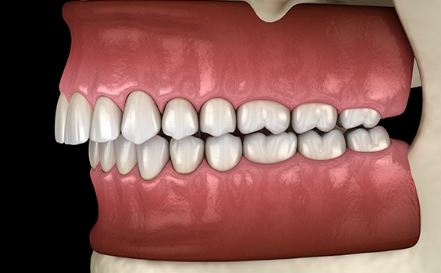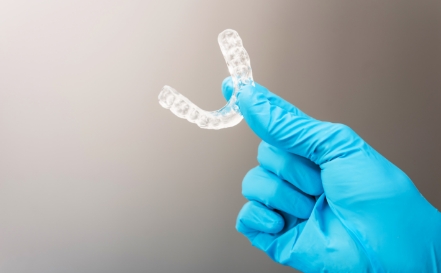TMJ Treatment – San Antonio, TX
Stop Your Jaw Pain and Headaches

Is a sore jaw a daily occurrence for you? Do you notice a popping or clicking sound when moving your mouth? Does your jaw sometimes have trouble opening or closing all the way? You may have a TMJ disorder – an issue with the jaw joints that can result in a lot of pain and get in the way of your daily activities. Dr. Patel can diagnose the root of the problem and help you find relief with a customized plan for TMJ therapy in San Antonio, TX; call today to start reclaiming a pain-free lifestyle.
Why Choose HIC Dental - Implant & Family Dentistry for TMJ Therapy?
- Fully Customized Oral Appliances
- Dentist That Only Recommends What You Need
- Convenient Hours, Short Wait Times
Diagnosis & Treatment

Diagnosing a TMJ disorder requires us to conduct a thorough examination of your jaw. We’ll check the range of motion of your jaw, look for specific sites where pain and discomfort are present, and check for abnormalities when you open and close your mouth. Of course, we’ll also take X-rays to get a closer look at your teeth and jawbone to see if there are any issues that could be causing your jaw pain. When we’ve figured out what’s causing your jaw pain, we can start suggesting treatments for stopping it.
Equilibration/ Occlusal Adjustments

Your teeth are meant to come together in a way that evenly distributes the forces and pressures involved with biting and chewing your food. When they don’t, it can lead to TMJ problems. To correct your bite, we can adjust select teeth by removing small amounts of enamel; our goal is to make all of your teeth come together evenly so that when your jaw is at rest, there’s less pressure being put on your TMJ.
Occlusal Splints

An occlusal splint is an oral appliance that resembles a mouthguard. It keeps the upper and lower teeth separated so that they’re protected from bruxism (unconscious grinding and clenching of the teeth), one of the biggest risk factors for a TMJ disorder. A splint can also be used to adjust the jaw to take some of the pressure off the jaw joints. Each occlusal splint is specifically made to fit comfortably in each patient’s mouth.
